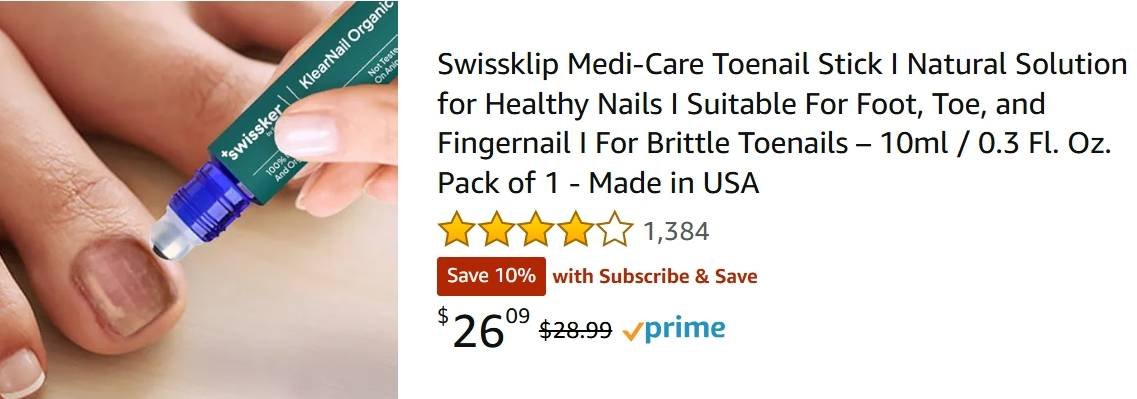How Long Does It Take for Toenail Fungus to Clear Up?
Find a Podiatrist Near You
Get same-day appointments with verified podiatrists. Insurance accepted.
Toenail fungus is a persistent condition that can take weeks or even months to fully clear up. The timeline depends on factors like the severity of the infection, type of treatment used, and individual health conditions. Understanding what to expect can help you stay consistent with treatment and avoid reinfection.

Factors That Affect Toenail Fungus Recovery Time
1. Severity of the Infection
Mild infections affecting only a small part of the nail may respond to treatment in a few months. However, severe infections that cause thickening, discoloration, or crumbling can take a year or longer to resolve. The deeper the fungus has penetrated, the longer it takes to grow out a healthy nail.
2. Type of Treatment Used
Different treatments work at different speeds. Some offer faster results, while others require patience. Here’s a look at common options:
- Topical Antifungal Treatments: These include creams, ointments, and medicated nail polishes. They work best for mild infections and typically take 6 to 12 months to show results.
- Oral Antifungal Medications: Prescription drugs like terbinafine and itraconazole treat fungal infections from the inside. They offer faster results, usually within 3 to 6 months, but require monitoring for potential side effects.
- Laser Therapy: This treatment uses light to destroy fungus in the nail bed. Results can be seen in a few months, but multiple sessions may be needed.
- Home Remedies: Natural treatments like tea tree oil, vinegar soaks, and hydrogen peroxide may offer mild relief, but they take longer and are less effective than medical treatments.
3. Individual Health Conditions
Your body’s ability to fight the infection affects healing time. People with diabetes, poor circulation, or weakened immune systems may take longer to clear up toenail fungus. Those with healthy immune systems and good foot hygiene typically recover faster.
How Long Does It Take for a New Nail to Grow?
Even after killing the fungus, the damaged nail must grow out. A toenail takes 12 to 18 months to fully replace itself. As the fungus clears, you’ll notice a new, healthy nail emerging from the base while the old infected nail gradually grows out.
In this video below, Michigan Foot Doctors explain how nail regrowth speed depends on location, age, and overall health. Toenails can take up to 18 months to fully return, while fingernails usually grow faster. You’ll also learn tips to protect the new nail bed during the healing phase and prevent infections that could slow the process.
Signs Your Toenail Fungus Is Healing
Knowing if your treatment is working helps you stay on track. Here’s what to look for:
- A clear nail growing from the base
- Reduced yellowing or discoloration
- Less thickening or crumbling
- No foul odor or debris under the nail
How to Speed Up Toenail Fungus Recovery
While patience is key, you can take steps to accelerate healing:
- Follow Treatment Consistently – Skipping doses or stopping early allows the fungus to return.
- Keep Feet Dry and Clean – Moisture promotes fungal growth, so wear breathable shoes and change socks regularly.
- Trim and File the Affected Nail – Removing infected parts helps treatments penetrate deeper.
- Use Antifungal Sprays or Powders – These prevent reinfection, especially in shoes.
- Disinfect Footwear and Nail Tools – Fungi can linger in shoes and on clippers, so clean them regularly.
- Support Immune Health – A strong immune system fights infections faster. Eat a balanced diet, stay active, and manage stress.
In this youtube video above, Dr. Eric Berg shares a direct, science-backed approach to clearing toenail fungus. He breaks down how the infection develops, why it’s so stubborn, and which treatments can speed recovery. You’ll hear practical tips on diet, antifungal options, and preventive habits to keep the problem from coming back.
What If the Fungus Doesn’t Go Away?
If you’ve been treating your toenail fungus for several months with no improvement, consider these possibilities:
- You may need stronger medication or a combination of treatments.
- The fungus might be resistant to your current treatment.
- Other nail conditions like psoriasis or trauma could be causing similar symptoms.
- Reinfection from shoes, socks, or shared surfaces might be occurring.
Consult a doctor if you don’t see progress after six months of consistent treatment.
Preventing Toenail Fungus from Returning
Once your toenail fungus clears up, follow these preventive steps:
- Keep feet dry and well-ventilated
- Wear moisture-wicking socks and breathable shoes
- Trim nails straight across to prevent damage
- Disinfect nail tools and avoid sharing them
- Use antifungal foot powders in shoes
- Change socks daily and wash them in hot water
- Avoid walking barefoot in public areas like gyms and pools
Final Thoughts
Toenail fungus takes time to clear up, with mild cases resolving in a few months and severe cases taking over a year. Choosing the right treatment, staying consistent, and maintaining good foot hygiene are key to success. If progress is slow, consult a doctor to explore stronger treatment options. Taking preventive measures ensures you don’t face another round of fungal infections.
Ready to See a Podiatrist?
Connect with top-rated podiatrists in your area. Book appointments instantly with verified doctors who accept your insurance.
Same-Day Appointments
Get seen today with urgent care availability
Verified Reviews
Real patient reviews and ratings
Insurance Accepted
Most major insurance plans covered
